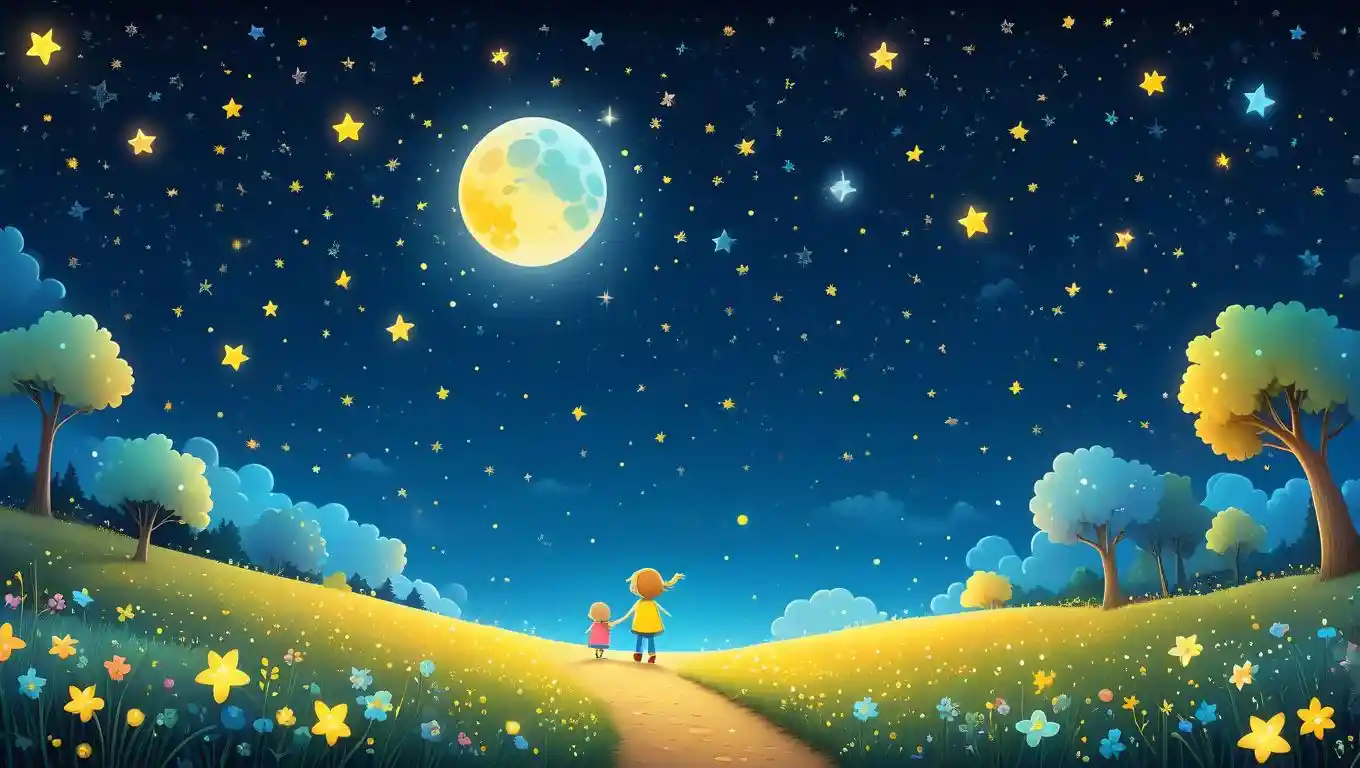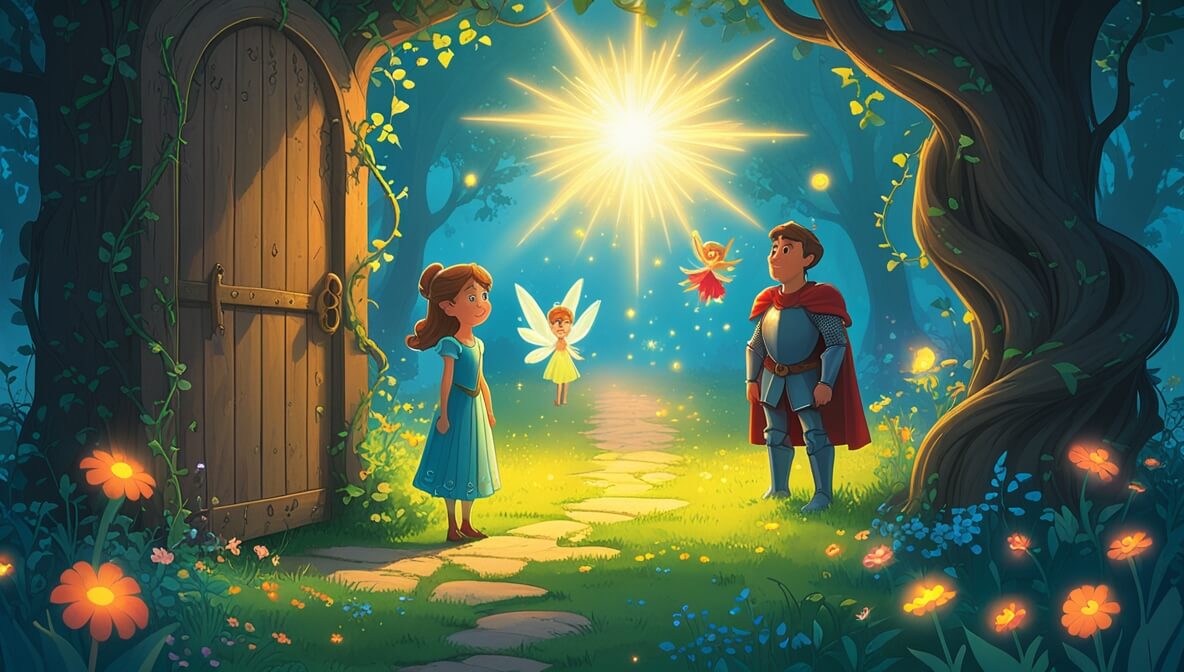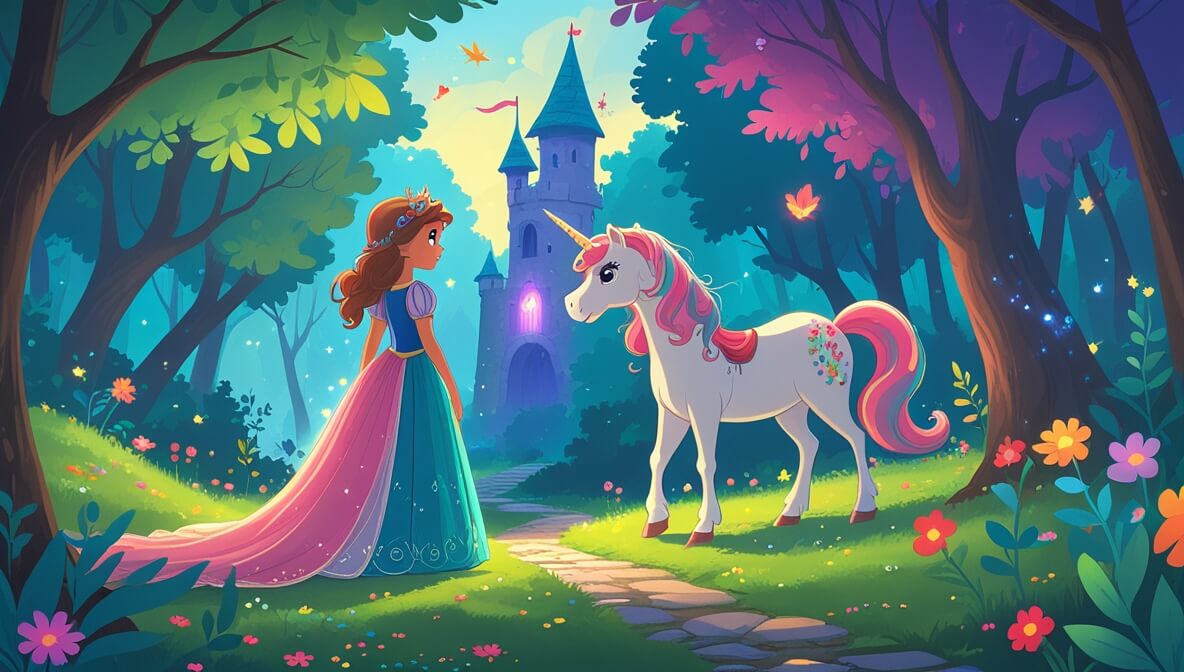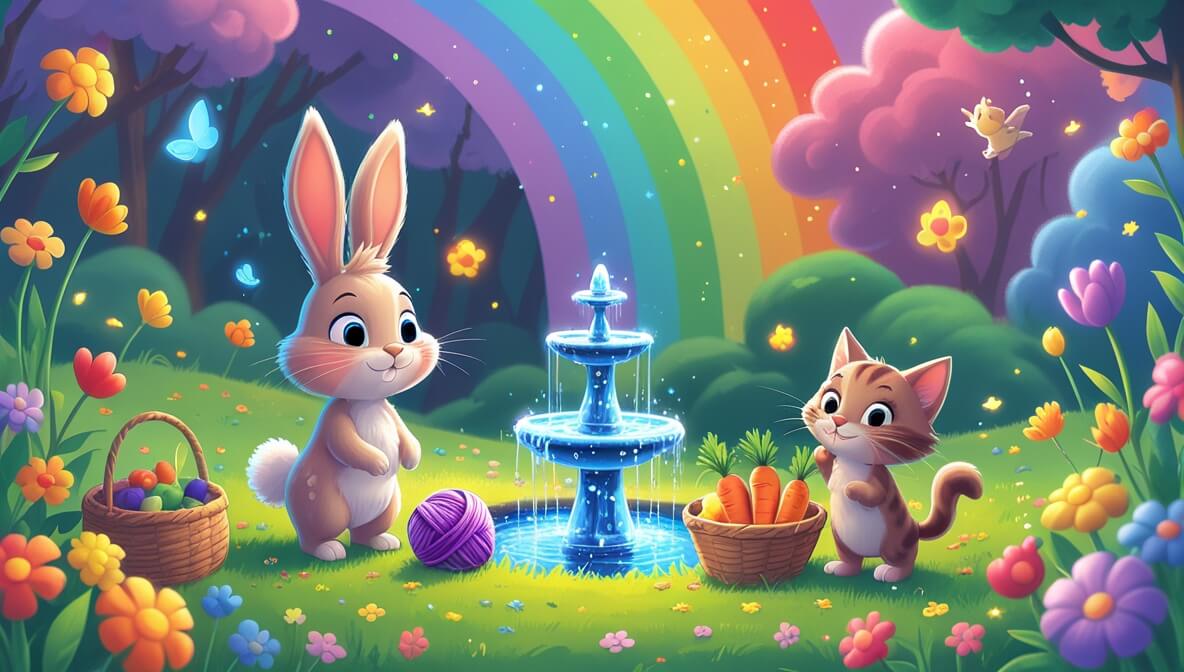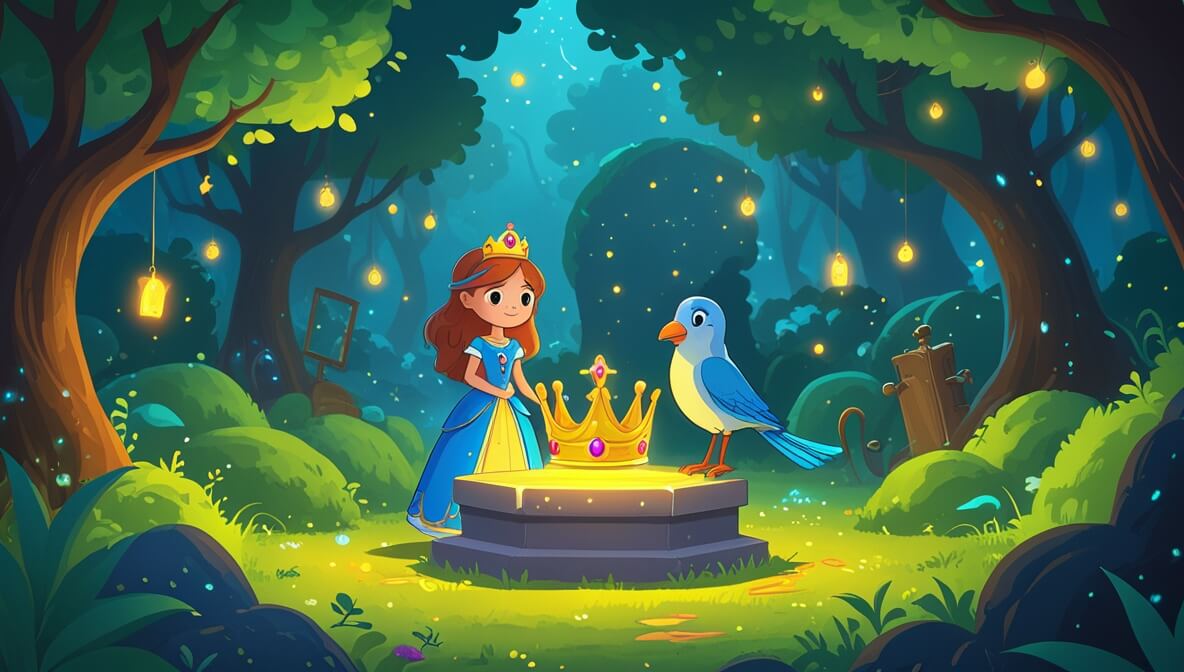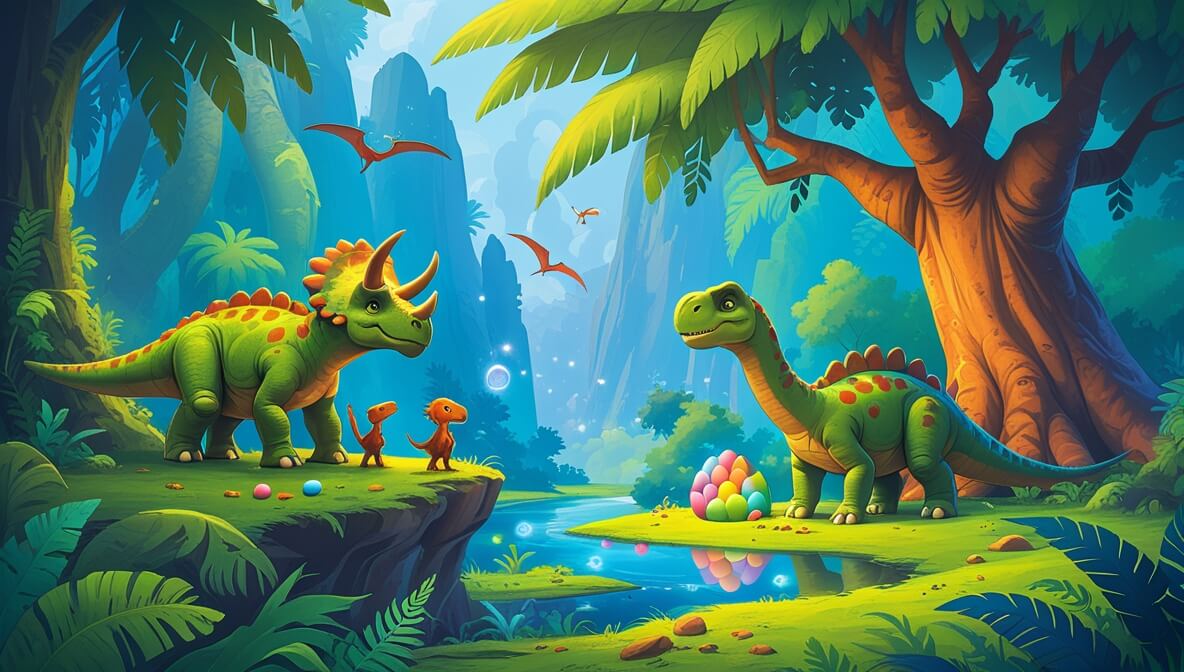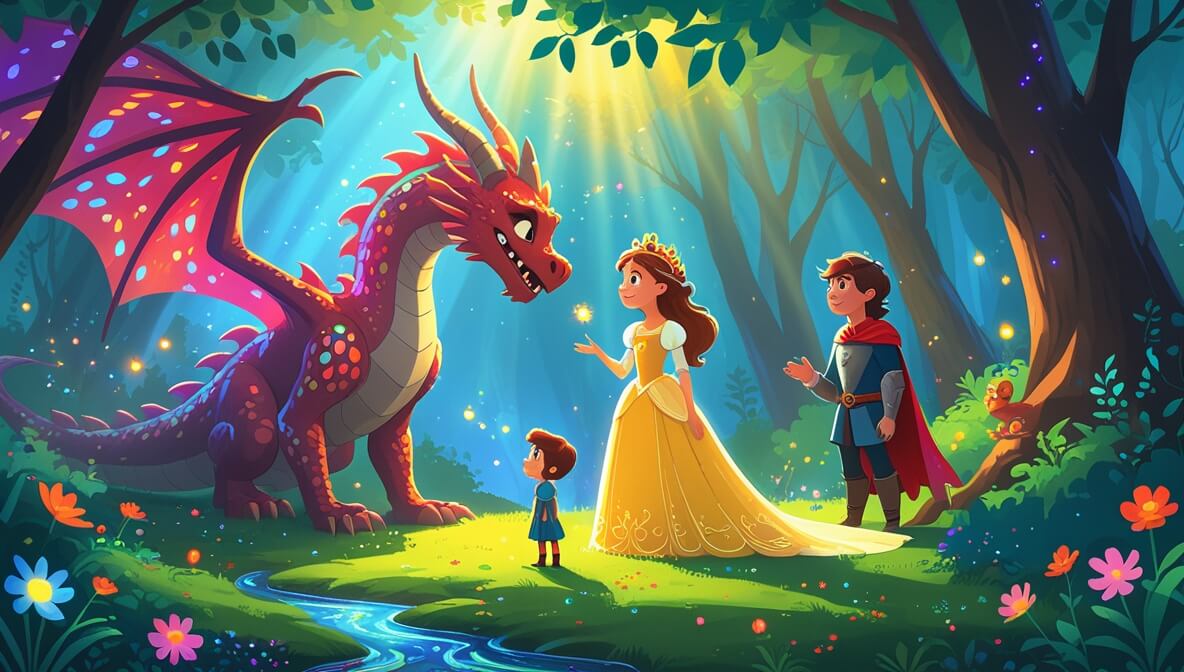A tiny star learns the value of humbleness and kindness when it tries to outshine the others but discovers true brightness comes from within.
Age Recommendation
3 - 10 years
Characters of The Little Star That Shined Brightest
Characters:
- Twinkle (a small but ambitious star)
- Big Glow (an older, wise star)
- The Moon (a gentle guide for the stars)
- Other Stars (Twinkle’s friends in the sky)
Story of The Little Star That Shined Brightest
Far, far away in the night sky, there was a little star named Twinkle. Twinkle was smaller than the other stars, but it had a big dream. It wanted to be the brightest star in the entire sky. Every night, Twinkle tried to glow as hard as it could, but no matter how much it sparkled, the other stars seemed just as bright.
One night, Twinkle said to its friend Big Glow, “I want everyone to notice me. I want to be the brightest star of all!” Big Glow chuckled softly and replied, “Twinkle, the sky is big enough for all of us to shine. You don’t need to outshine anyone. Just be yourself.” But Twinkle didn’t understand. It thought, "If I shine brighter, I'll be special."
The next night, Twinkle decided to try even harder. It puffed up all its light, glowing so brightly that it made the other stars dim in comparison. The Moon noticed Twinkle’s effort and gently asked, “Why are you trying so hard, little one?” Twinkle replied, “I want to be the most important star in the sky!” The Moon smiled and said, “True brightness comes from helping others, not from outshining them.”
Twinkle didn’t understand at first, but then something happened. A little girl on Earth was looking up at the sky, staring at the stars. She was lost on her way home and felt scared. Twinkle noticed her and thought, "Maybe I can help." Twinkle began to sparkle gently, guiding the girl with its light. The other stars noticed and joined in, creating a soft, glowing path in the night sky. With their help, the little girl found her way home.
The next morning, as the stars rested, Big Glow said to Twinkle, “You see? By helping someone, you became the brightest star in her eyes. That’s what truly matters.” Twinkle smiled, realizing that being humble and kind made it shine brighter than ever before. From then on, Twinkle didn’t try to outshine the others. Instead, it focused on spreading its light wherever it was needed.
And so, Twinkle became known as the little star that shined the brightest—not because it was the biggest or the loudest, but because it was the kindest.
The end.
Moral of the Story
True greatness comes from helping others and being humble. Just like Twinkle learned, you don’t need to compete to be noticed. Being kind and thoughtful will make you shine in ways that truly matter.
Questions to Think About
- Why did Twinkle want to be the brightest star?
- What did the Moon mean by “true brightness comes from helping others”?
- How did Twinkle feel after helping the little girl?
- Can you think of a time when you helped someone and felt happy about it?
Do You Know
- Stars in the sky are actually giant balls of burning gas, but they appear tiny because they are so far away!
- Some stars are part of constellations, which are patterns in the sky. People have been naming constellations for thousands of years.
Word Explorer
- Humble: Being modest and not thinking you’re better than others.
- Glow: To shine softly with light.
- Guide: To show the way or help someone find their path.
Emotions in the Story
- Ambition: When Twinkle wanted to be the brightest star.
- Kindness: When Twinkle helped the little girl find her way home.
- Happiness: When Twinkle realized that helping others made it truly shine.
Color Your Scene
Imagine Twinkle and the other stars lighting up the night sky to guide the little girl home. What colors would you use for Twinkle’s glow? Would you make the sky dark blue or black? Draw the scene of the stars working together to spread their light!
Parents' Corner
Talk to your child about the importance of being humble and helping others. Discuss how Twinkle’s kindness made it shine brighter and how we can apply that in our daily lives. Encourage your child to share moments when they helped someone or worked together with others to achieve something good.

